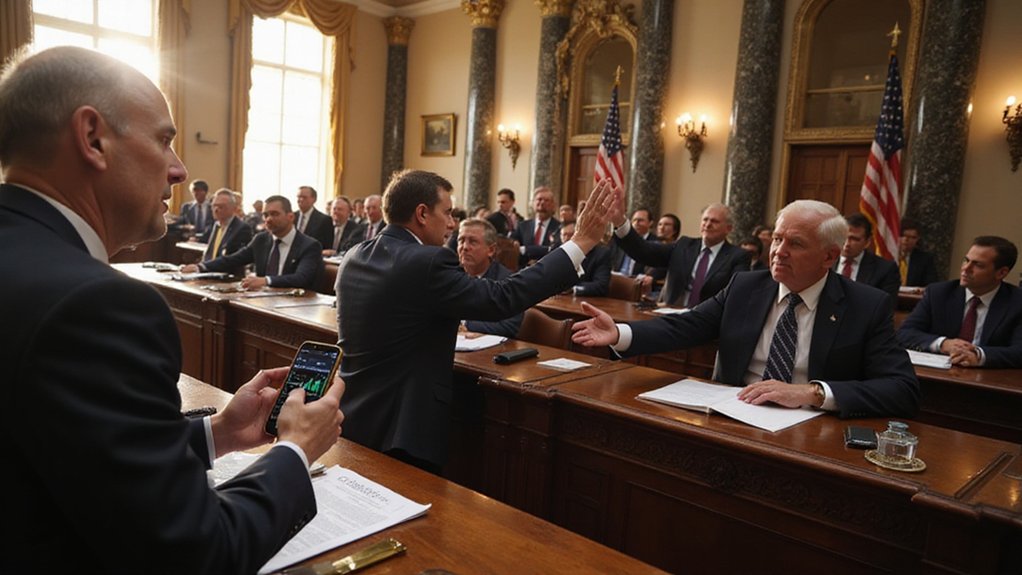A milestone in the often chaotic world of cryptocurrency regulation, the GENIUS Act has emerged from the Senate with a surprisingly robust 68-30 vote, establishing the first thorough federal framework for stablecoins—those digital assets that promise price stability by pegging themselves to traditional currencies like the dollar.
This bipartisan achievement (a rare species in today’s political ecosystem) represents more than legislative theater; it creates a thorough licensing regime that demands stablecoin issuers maintain actual reserve assets backing their digital promises. The irony is palpable—an industry built on decentralization now welcomes federal oversight with open arms, perhaps recognizing that credibility requires more than cryptographic algorithms and venture capital endorsements.
The Act’s consumer protection mandates address fundamental questions that have plagued the sector: What happens when your “stable” coin isn’t backed by anything stable? Regular audits and transparent disclosures become requirements rather than marketing suggestions, while redemption guarantees assure holders can convert their digital tokens at full value—assuming, of course, that issuers haven’t been playing fast and loose with reserve management. As the regulatory landscape evolves, specialized auditing services become increasingly crucial for ensuring compliance and maintaining investor confidence in digital asset projects.
The fundamental question plaguing stablecoins: what happens when your “stable” coin isn’t backed by anything remotely stable?
Market stability provisions tackle the specter of bank-like runs that have haunted stablecoin projects, standardizing reserve requirements across issuers while preventing the kind of market manipulation that transforms “stable” assets into volatile nightmares. The legislation’s light-touch approach (regulatory speak for “we’re watching, but not strangling”) encourages innovation while establishing guardrails against systemic risk.
Perhaps most importantly, this framework positions the United States as the global standard-setter for stablecoin regulation, attracting investment to compliant domestic projects while cementing American leadership in digital financial infrastructure. The Act’s passage signals that lawmakers finally grasp stablecoins’ potential as reliable mediums of exchange within blockchain-based payment systems. Stablecoins now command 60% of crypto transaction volume, demonstrating their critical role in facilitating digital asset trading and payments.
The legislation’s broader implications extend beyond immediate market effects—it establishes precedent for future digital asset regulation and creates foundation for international regulatory collaboration. Major financial institutions are now positioning themselves to offer compliant services under the new regulatory framework.
As the crypto industry matures from Wild West speculation toward institutional adoption, the GENIUS Act provides the regulatory clarity that institutional investors demand while fostering the innovation that drives technological advancement.
Whether this balance proves sustainable remains the billion-dollar question.









